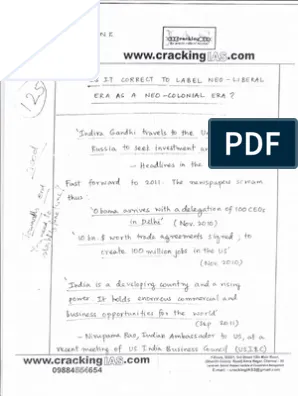- Home
- Prelims
- Mains
- Current Affairs
- Study Materials
- Test Series
 EDITORIALS & ARTICLES
EDITORIALS & ARTICLES
Santhal Hul of 1855
- The Santhal Hul of 1855 was one of the earliest peasant uprisings against British colonial rule in India. Led by four brothers - Sidho, Kanho, Chand, and Bhairav Murmu - along with sisters Phulo and Jhano, the revolt began on 30thJune 1855.
- The revolt targeted not only the British but also upper castes, zamindars, darogas, and moneylenders, collectively termed ''diku''.
- It aimed to protect the economic, cultural, and religious rights of the Santhal community.
- Genesis of the Uprising:
- In 1832, certain areas were designated as ‘Santhal Pargana’ or ‘Damin-i-Koh’, which includes present-day Sahibganj, Godda, Dumka, Deoghar, Pakur, and parts of Jamtara, in present-day Jharkhand.
- The area was given to the Santhals who were displaced from various regions under the Bengal Presidency.
- The Santhals were promised settlement and agriculture in Damin-i-Koh, but instead they faced repressive land-grabbing and begari (bonded labour).
- Two systems of bonded labour emerged in Santhal territory, known as kamioti and harwahi.
- Under kamioti, the borrower had to work for the lender until the loan was repaid, while under harwahi, the borrower had to provide personal services and plough the lender''s field as needed. The terms of the bond were so strict that it was nearly impossible for the Santhal to repay the loan in their lifetime.
- Guerrilla Warfare and Suppression:
- The Murmu brothers led around 60,000 Santhals in guerrilla warfare against the East India Company. Despite fierce resistance lasting six months, the revolt was crushed in January 1856 with severe casualties and devastation.
- More than 15,000 Santhals lost their lives, and over 10,000 villages were destroyed.
- The Hul highlighted early resistance against British colonial rule and remains a symbol of tribal resilience.
- Impact: The uprising led to the enactment of the Santhal Pargana Tenancy Act of 1876 (SPT Act) prohibits transfer of Adivasi lands to non-Adivasis, allows land inheritance only within the community and preserves Santhals'' right to self-govern their land.
Santhal Tribe
- It is the third largest scheduled tribe in India after the Gonds and Bhils, known for their calm and peaceful nature. They originally led a nomadic life but settled in Chota Nagpur plateau and migrated to Santhal Parganas in Bihar and Odisha.
- They are located in Jharkhand, Odisha, and West Bengal, and are involved in cultivation, industrial labour, mining, and quarrying.
- They follow an autonomous tribal religion and worship nature at sacred groves. Their language is Santhali and they have their own script called ‘OL chiki’ is recognised as one of the scheduled languages in the Eighth Schedule.
- Their artforms like Phuta Katcha pattern saree and dress are popular. They celebrate various festivals and rituals related to agriculture and worship. Santhal houses, known as ''Olah'', are easily recognizable due to their large, neat, and attractive appearance, adorned with multi-coloured paintings on the exterior walls.
What are the Other Tribal Revolts in Chota Nagpur Region?
- Munda Rebellion: The Munda Ulgulan (rebellion) was a significant tribal revolt during Indian Independence, highlighting the tribal people''s ability to raise their voice against exploitation.
- The Munda tribe in Chota Nagpur, Jharkhand, primarily engaged in agriculture, faced oppression from British colonists, zamindars, and missionaries. Their land was seized, and they were forced to work as labourers.
- Birsa Munda spearheaded the movement, striving to reclaim the tribe''s lost land and rights.
- The Chotanagpur Tenancy Act, (CNT Act) enacted by the British in 1908 as a result of the Birsa Movement, allows land transfers within the same caste and certain geographical areas with the approval of the District Collector.
- This Act also restricts the sale of Adivasi and Dalit land, while allowing land transfers between Adivasi individuals from the same police station and Dalits in the same district.
- Tana Bhagat Movement: Started in April 1914 under the leadership of Jatra Bhagat, aiming to stop the evil practices in the Oraon community of Chotanagpur and oppose the exploitation by Zamindars.
- The movement promoted non-violence, influenced by Mahatma Gandhi. As a result of the movement, animal sacrifices were stopped and drinking alcohol was prohibited.
- Chuar Uprising: Chuar Uprising took place in the region between Chota Nagpur and the plains of Bengal from 1767 to 1802, led by Durjan Singh. The tribes rebelled and used guerrilla tactics in response to the British taking away their land.
- Tamar Revolt: It was an uprising by the Oraon tribes of Tamar in the Chotanagpur region between 1789 and 1832, led by Bhola Nath Sahay.
- The tribes revolted against the faulty alignment system implemented by the British government, which had failed to secure the land rights of the tenants, causing unrest among the Tamar tribes in 1789.
Tribal Revolts in Colonial India
- Tribal revolts in colonial India were diverse and multifaceted, reflecting deep-seated grievances against British colonial policies and their impact on tribal communities.
- These movements, categorized into mainland and frontier tribal revolts, spanned from the late 18th century to the eve of Indian independence, influencing regional dynamics and challenging British authority.
|
Aspect |
Mainland Tribal Revolts |
Frontier Tribal Revolts |
|
Geographical Focus |
Central and west-central India. |
Northeast region of India |
|
Characteristics |
Agrarian and forest-based; focused on land and forest policies. |
Political autonomy and cultural preservation; less impacted by land settlement policies. |
|
Causes |
Land revenue settlements, Forest policies, Influx of outsiders, and Christian missionaries |
Political autonomy, Control over land and forests, and De-sanskritization movements |
|
Goals |
Local autonomy, cultural preservation |
Political autonomy, independence |
|
Cultural Resistance |
Aimed at preserving tribal identities and customs |
Resisted cultural influences, particularly Sanskritisation |
|
Impact |
Contributed to regional identity and autonomy movements |
Focused on preserving indigenous practices and political autonomy |
|
Examples of Movements |
Pahariya Rebellion (1778, RajMahal Hills), Chuar Uprising (1776, Midnapore and Bankura), Khond Uprisings (1837-56 and 1914), Koya Revolts (1879-80, Eastern Godavari tract of Andhra Pradesh), and Rampa Revolts (1922-1924, Andhra Pradesh) |
Ahom Revolt (1828, Assam), Singphos’ Rebellion (early 1830, Assam), Kukis’ Revolt (1817-19, Manipur), Naga movement (1905-31;Manipur), and Zeliangsong Movement (1920s; Manipur) |









 Latest News
Latest News General Studies
General Studies